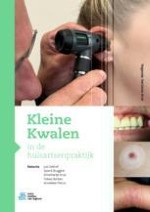2024 | OriginalPaper | Hoofdstuk
5. Zonnesteek/heliose
Auteur : Imme Smid
Gepubliceerd in: Kleine Kwalen in de huisartsenpraktijk
Uitgeverij: Bohn Stafleu van Loghum
Kernpunten
-
Bij een hitteberoerte of zonnesteek stijgt de lichaamstemperatuur boven de 40 °C en treden neurologische verschijnselen op zoals verwardheid, delirium, convulsies of coma.
-
Bij de minder ernstige hitte-uitputting is er een verhoogde lichaamstemperatuur van 38–40 ºC. Dit gaat gepaard met spierkrampen, algehele malaise, hoofdpijn, misselijkheid, duizeligheid en collaps.
-
Bij een hitteberoerte moet met spoed een ambulance worden gebeld. Behandeling moet klinisch plaatsvinden.
-
Bij de behandeling van hitte-uitputting staan voldoende vocht- en zoutinname en verplaatsing naar een koele omgeving voorop.
